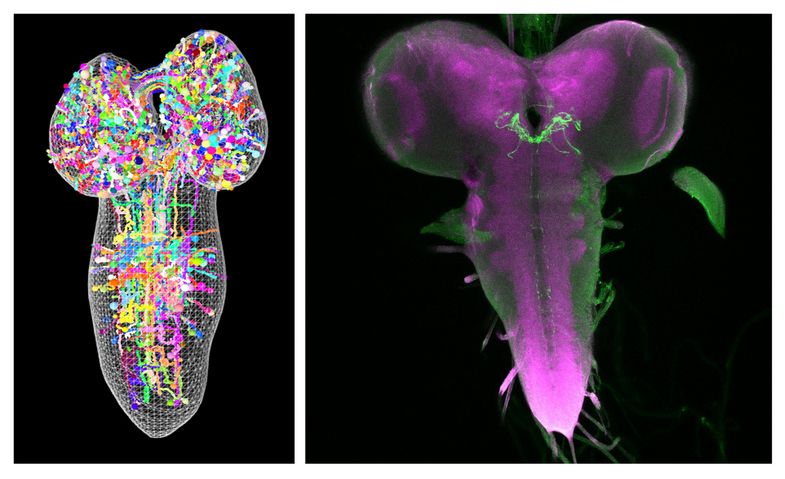“Most animals have a preferred temperature – what’s called an optimum. This is also the case for us,” said Professor Andreas Thum, head of the Department of Genetics at Leipzig University, who participated in the study with two of his students. “For many of us, winter is too cold and summer is too hot.” The question for the international team from Leipzig University, Harvard University, Brandeis University and the University of Cambridge was therefore: how do organisms perceive temperatures and what mechanisms enable them to detect temperature rises and falls, and how does the brain use this information to then change behaviour?
For the first time, using novel genetic, physiological, anatomical and behavioural techniques, the researchers describe new temperature-activated sensory neurons and molecules in the Drosophila larva, in their work recently published in the journal Science Advance. “Studying how hyperthermia or hypothermia are avoided, and euthermia is accomplished in mammals is complex because it involves a variety of physiological mechanisms that range from vasoconstriction to sweating, to shaking and navigation motor programs. Poikilotherms such as fish, reptiles, and insects, are unable to significantly regulate internal body temperature with physiological mechanisms, and they rely on navigation maneuvers to find regions with temperatures closer to their homeostatic set-points. Some poikilotherms, like python vipers, cave beetles, and larval Drosophila have evolved exquisite neural and behavioral thermosensitivities. This property, in addition to the powerful Drosophila genetic toolbox makes the fly larva ideal to study homeostatic regulation”, said Dr Luis Hernandez-Nunez of Harvard University, the study’s lead author.
This discovery allowed the researchers to analyse the sensorimotor changes used by fly larvae to detect changes in ambient temperature and modify their behaviour. They describe for the first time a temperature-dependent cross-inhibition between opponent sensory neurons that are activated by heating and cooling, efficiently driving the larva to its homeostatic thermal set point and helping it stay there. This differs markedly from the widely held view of what is known as a ‘labelled line’, according to which thermoregulation is achieved by two separate mechanisms: first, a system that detects cold – receptors and neural pathways that control cold avoidance. And second, a system that detects heat – receptors and neural pathways that ensure that the animal avoids heat. “Instead, we find that in the larva, the two classes of thermosensors interact and each play an important role, whether the temperature is rising or falling. So there are not independent warming and cooling systems, only a connected system,” said Professor Andreas Thum.
The study thus establishes for the first time a quantitative model of how the interplay of warming and cooling pathways in the larval brain leads to efficient thermoregulation. Using this theoretical framework, predictions can now be made about how the larva will behave in response to a variety of temperature increases or falls. These can then be tested directly in experiments. Similarly, serial electron microscopy was able to decipher the second-order circuits in the larval brain. These results will help scientists to understand how a simple brain processes thermosensory information in order to control behaviour.
“By describing many circuits of the larval brain, which consists of only about 10,000 neurons, for the first time using 3D electron microscopy, we are currently gaining entirely new insights into the anatomy of the brain that will deliver a functional understanding of parts of it despite its complexity. The exciting question for our research will now be whether we can find these mechanisms in a similar form in more complex brains,” said Professor Andreas Thum.
Original title of publication in Science Advance:
“Synchronous and opponent thermosensors use flexible cross-inhibition to orchestrate thermal homeostasis.” DOI: 10.1126/sciadv.abg6707































































